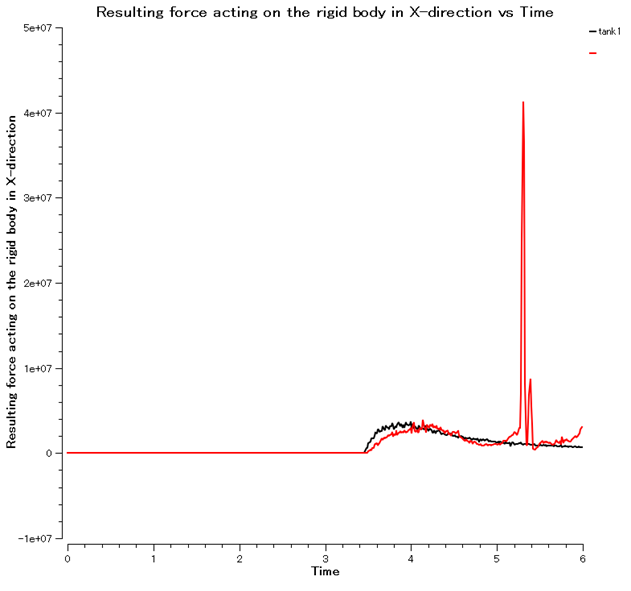解析事例6 SPHモジュールによる津波シミュレーション
By courtesy of Prof. Jun Ishimoto, Tohoku University
津波の第一波の引き波によって構造物が沖合に流され、第二波に構造物が巻き込まれ、海岸を遡上すると、陸上構造物に衝突し大きな被害を及ぼすことが予想されます。
実際の引き波を想定した解析は膨大な計算時間を必要するため、ここでは第一波(構造物なし)の解析と第2波を想定した解析(小さめのタンクが沖合に流され放置されている状態を初期状態とする)を行い、衝撃力の比較を行いました。
小タンク : 直径4m、高さ4mの直円筒形
(case2では半分の大きさ)
大タンク : 直径8m、高さ8mの直円筒形
SPH要素数 : 943,950
全節点数 : 316,400
実際の引き波を想定した解析は膨大な計算時間を必要するため、ここでは第一波(構造物なし)の解析と第2波を想定した解析(小さめのタンクが沖合に流され放置されている状態を初期状態とする)を行い、衝撃力の比較を行いました。
小タンク : 直径4m、高さ4mの直円筒形
(case2では半分の大きさ)
大タンク : 直径8m、高さ8mの直円筒形
SPH要素数 : 943,950
全節点数 : 316,400
津波シミュレーション

第二波に巻き込まれた構造物が衝突すると、第一波(波だけの場合)の10倍以上の力を加えていることが分かります。
第一波最大値:約3.5MN
第二波最大値:約42MN
赤:第二波
黒:第一波
タンクサイズを小さくした場合
|
Pov-Ray によるレンダリング結果 |
|
*IMPETUS Afea 専用PostProcesser のPovray export機能を使用しています。y export機能を使用しています。

 English
English  日本語
日本語 












